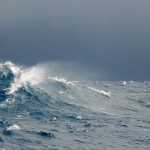 Last year I wrote about the Californian startup Orbital Insight, who were using artificial intelligence to analyze huge databases of satellite images to try and spot deforestation before it gets out of hand.
Last year I wrote about the Californian startup Orbital Insight, who were using artificial intelligence to analyze huge databases of satellite images to try and spot deforestation before it gets out of hand.
It works by keeping an eye out for suspicious changes, such as new road building around forests for instance. Once such changes have been spotted, an alert is published on the Global Forest Watch website, where hopefully corrective action can be taken.
Not content with tackling deforestation, the Orbital team are now using their AI smarts to try and give us a better understanding of water levels around the world, and more importantly, how they’re changing.
Mapping the seas
They are taking images from the US Geological Survey’s Landsat 7 and 8 satellites and running them through their neural network, which aims to pinpoint the location of the surface water, and its area.
The team began by manually sifting through images to find ones with sufficient information to allow their neural network to be trained with them.
“We basically built … Tinder for Landsat maps: Swipe right if it’s good, swipe left if it’s bad,” the team say.
This training has developed a system that’s very good at differentiating water from other land forms, even under challenging circumstances such as when shadow covers land.
The team believe that this data could be hugely valuable to a range of groups, including insurance companies and climate change agencies.
The system is capable of labelling the world’s water on a fortnightly cycle at the moment, but the plan is to reduce this to a weekly cycle soon. Even a fortnightly update is better than current methods however, which often rely on models that are decades old.
“With climate change, these models are becoming moot,” the team say. “The more information we can gather as the climate is changing, the better we can model, and better models are needed for the water security of all users.”
Smarter mapping of our oceans
It’s certainly a nice project, although it isn’t the only one that’s attempting to enhance our understanding of the seas by utilizing the latest technology.
For instance, Autonomous Marine Systems have developed automated devices for the purpose of marine research.
The devices, called Datamarans, are described by the company as self-deploying buoys and are equipped with low power computers and smart navigational equipment.
They are capable of maintaining their position for the duration of their work before then returning to base upon completion of their mission.
Or you have the REMUS SharkCam, which is an underwater drone that has tracked sharks and captured some incredible footage of the creatures.
The project, which is the first to autonomously track an animal in a marine environment, was documented in a recently published paper.
“We wanted to test the REMUS SharkCam technology to prove that is was a viable tool for observing marine animals—sharks in this case—and to collect substantial data about the animals’s behavior and habitat,” the authors say.
The oceans remain something of an unknown environment, so it will be fascinating to see just how effective these various approaches are at deepening our understanding of them.